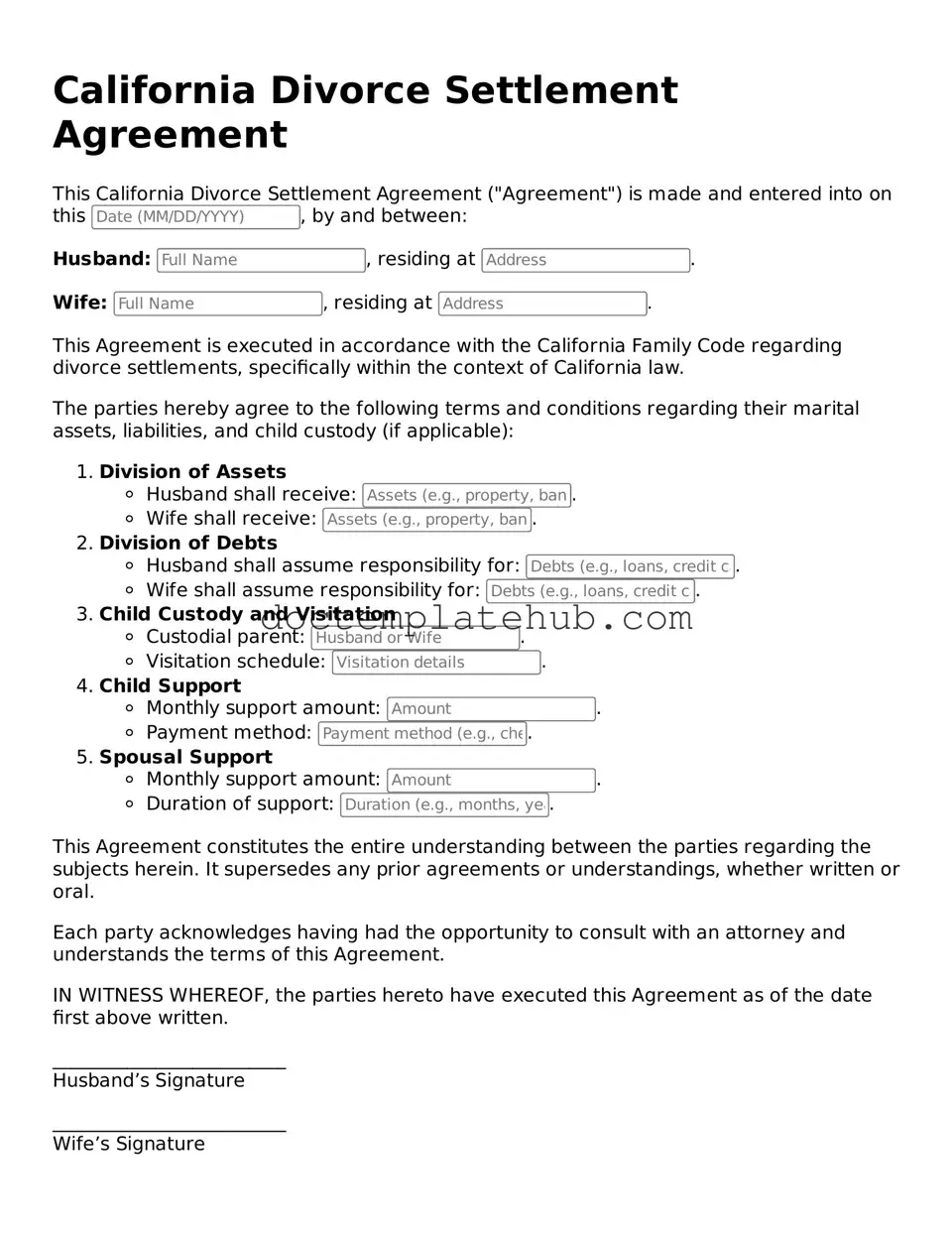What is a California Divorce Settlement Agreement?
A California Divorce Settlement Agreement is a legal document that outlines the terms of a divorce between two parties. It details how assets, debts, child custody, and support will be handled after the divorce. This agreement is crucial as it helps both parties understand their rights and responsibilities post-divorce.
Why is a Divorce Settlement Agreement important?
This agreement is important because it provides clarity and reduces the likelihood of future disputes. By having a written record of the terms agreed upon, both parties can refer back to it if disagreements arise later. It also helps the court understand how the couple has decided to resolve their issues.
What should be included in the Divorce Settlement Agreement?
The agreement should include details about the division of property, allocation of debts, child custody arrangements, child support, and spousal support if applicable. It may also address issues like tax implications and health insurance coverage. Each section should be clear to avoid misunderstandings.
How do I create a Divorce Settlement Agreement?
Creating a Divorce Settlement Agreement involves negotiation between both parties. It’s often advisable to consult with a lawyer to ensure that all legal requirements are met. After discussions, draft the agreement, ensuring all terms are clearly stated. Both parties should review it carefully before signing.
Can I modify the Divorce Settlement Agreement after it is signed?
Yes, modifications can be made to the agreement after it is signed, but both parties must agree to the changes. It’s best to document any modifications in writing and have both parties sign the revised agreement. This ensures that all changes are clear and legally binding.
Is a Divorce Settlement Agreement legally binding?
Yes, once both parties sign the Divorce Settlement Agreement, it becomes legally binding. This means that both parties are obligated to adhere to the terms outlined in the document. If one party fails to comply, the other can seek legal recourse through the court.
What happens if we cannot reach an agreement?
If the parties cannot reach an agreement, the case may go to court. A judge will then make decisions regarding asset division, custody, and support based on the evidence presented. This process can be lengthy and costly, making it beneficial to reach an agreement outside of court if possible.
Do I need a lawyer to file a Divorce Settlement Agreement?
While it is not required to have a lawyer to file a Divorce Settlement Agreement, it is highly recommended. A lawyer can provide guidance on legal rights and obligations, ensuring that the agreement is fair and complies with California laws. This can prevent potential issues in the future.
How long does it take to finalize a Divorce Settlement Agreement?
The time it takes to finalize a Divorce Settlement Agreement can vary widely. If both parties agree on the terms quickly, it may take only a few weeks. However, if negotiations are lengthy or complicated, it could take several months. Once filed with the court, the judge will review and finalize the divorce.
Where do I file the Divorce Settlement Agreement?
The Divorce Settlement Agreement should be filed with the family law court in the county where either spouse resides. It is essential to follow local court rules regarding filing procedures and any required forms. After filing, the court will schedule a hearing to finalize the divorce based on the agreement.
